The herbaceous plant Burnet (Sanguisorba) is part of the Rosaceae family. In the wild, you will notice this flower immediately, since it has shoots of a rich dark green hue with spectacular openwork leaves, as well as unusual pinkish inflorescences that have the shape of spikelets or cones. The name burnet was given to such a plant for a reason, this is due to the fact that it has the ability to stop bleeding.
Scientifically, the burnet is called sanguisorba. In natural conditions, it can be found in North America and Eurasia, and it prefers a temperate climate. This plant is capable of growing rapidly, while forming whole thickets. Especially often, such thickets can be found in the coastal zone, as well as on forest edges. Burnet thickets can also be seen at the foot of the Caucasian mountains.
Content
Burnet features
Burnet belongs to ornamental plants, and is appreciated for its unusual spectacular appearance. The surface of the pale brown powerful rhizome is covered with cracks. Under the ground, the rhizome is placed diagonally or horizontally, and it is buried in the soil by only 12 centimeters. Lignified fibrous layers are located around the root.
Weakly branching stems are about one and a half meters high. Shoots are decorated with unpaired leaf plates with petioles. At the bottom of the bush, most of the leaves are collected, where they form a dense rosette. The rest of the foliage is alternately located, it is painted in bright green and has a small size. The edge of the leaf plates is crenate, and on their surface there is a relief pattern consisting of a mesh of veins.
Flowering is observed in the summer, while its duration is equal to several months. In some cases, flowering continues in the first weeks of autumn. At the top of the peduncle, an inflorescence of a spike-shaped or capitate is formed, which consists of flowers tightly pressed against each other, painted in a light pink or pale red shade. Unusual flowers include only stamens in their composition, and instead of petals they are decorated with bracts.In the middle of the inflorescence there is a pistil with a clavate shape, its lower part is surrounded by an ovary.
If the flowers are pollinated, then after they wither, fruits will form in their place, which are very small smooth pear-shaped single-seeded nuts. They have a brownish tint.
Landing in open ground
Growing from seeds
Gardeners use root cuttings for propagation of burnet, as well as the seed method. If you don't want to mess with seedlings, then sow the seeds directly into the open ground. For this crop, winter sowing, which is carried out in late autumn, is ideal. When choosing a site for sowing, pay attention to the fact that the soil should be nutritious and good for air permeability. Sow the seeds into the soil shallow. Upon completion of sowing, the bed is sprinkled on top with a thin layer of peat.
The first seedlings during podzimny sowing will appear only in spring. Returning spring frosts and weeds are not capable of harming the seedlings. Transplanting young bushes to a permanent place is carried out in the autumn, when they grow up and get stronger. They take bushes together with a lump of earth. When transplanting a burnet, make sure that the distance between the bushes is at least half a meter. Remember that this culture has only biennial shrubs in bloom.
Propagation by root layers
Adult burnet shrubs, which have been decorating your garden for more than one year, have a powerful branched rhizome. Such bushes can be used to get the cut. Remove the root of the plant from the soil. Please note that this must be done very carefully. After that, take a sharp tool and divide the bush into several parts, while leaving at least one growth point on each division. Sections should be treated with wood ash, which has a disinfecting property.
Burnet care in the garden
Burnet is distinguished by undemanding care and unpretentiousness. She is able to survive even if conditions are unfavorable. In terms of its vitality, this plant is able to surpass not only other garden flowers, but also weeds.
Seat selection
A site suitable for growing such a crop must be open. The flower will grow best in moist, fertile soil with an admixture of humus, which allows water and air to pass through well. Areas where the soil is alkaline or water stagnant is not suitable.
Watering
Burnet needs systematic watering; it is not for nothing that in the wild it prefers to grow in coastal wet areas. Remember that this moisture-loving plant can be severely affected by dry soil, so try to keep it a little damp at all times.
Fertilizer
Such a garden culture also needs regular feeding. Complex mineral fertilizer is perfect for this. Top dressing is carried out in early spring, immediately after the thaw begins. During the growing season, the bushes are fed several more times. To do this, use a nutrient solution consisting of mineral fertilizers, organic additives and water. This solution must be poured under the root of the bush.
Care tips you need
- In order to avoid the formation of a crust on the surface of the soil, it should be systematically loosened, but do this very carefully so as not to injure the roots. Remove the weeds while loosening.
- If you grow a vigorous species or variety, then during flowering its shoots can bend strongly, which negatively affects the decorative effect of the bushes. Also, the stems can be injured by strong gusts of wind. That is why such bushes need a mandatory garter, and it is also recommended to plant them closer to the bushes.
- This flower reproduces well by self-seeding. In order to prevent self-seeding, it is necessary to cut off the inflorescences that have begun to fade in time.
- Most of the species of this perennial plant are highly resistant to frost and winter well even in regions with severe winters with little snow.
Diseases and pests
Burnet is highly resistant to both pests and various diseases. However, spotting or a mosaic pattern may appear on its foliage, which indicates a disease affecting the bush. All affected plants should be dug up and destroyed as soon as possible, and the remaining bushes should be treated with a fungicide solution. If pests are noticed on the bush, then they can be destroyed with an appropriate insecticidal preparation.
Types and varieties of burnet with photo
In nature, there are about 20 types of burnet. However, gardeners cultivate only part of the species on their site.
Burnet medicinal (Sanguisorba officinalis)
In the Rosaceae family, this species is one of the rarest medicinal plants. And experts also classify it as an endangered species. The shoots of the flower are tall and straight. Unpaired leaves form a lush basal rosette, their lobes have an ovoid shape and a serrated edge. On the shoots themselves, alternate leaf plates grow. Small flowers of burgundy or purple color are collected in a dense spike-shaped inflorescence. The best varieties:
- Pink tanna - dense spike-shaped inflorescences of pink color are formed on the bush, and at the peak of flowering, their heads are directed downward;
- Tanna - in a compact bush, hard scarlet inflorescences are formed.
Blunt Burnet (Sanguisorba obtusa)
This species comes from Japan, and you can meet it in nature in the mountains. The bushes are never taller than 100 cm. At the tops of the peduncles, spectacular lush inflorescences are formed, which adorn many pink pistils. The stem branches near the base. In the middle of the shoots, feathery greenish-gray leaf plates grow. The Alba variety is very popular among gardeners: during flowering, the bushes are decorated with snow-white fluffy inflorescences.
Burnet of Menzies (Sanguisorba menziesii)
This perennial plant forms a vigorous shrub, consisting of straight, long shoots. Unpaired leaves of a bluish color form a lush basal rosette. The height of long peduncles can be up to 120 cm. Flowering begins in the first days of June, at this time rich pink brushes are formed on the bushes, which reach no more than 70 mm in length.
Alpine Burnet (Sanguisorba alpina)
Bushes of medium height have strongly leafy shoots. Heart-shaped leaf plates are colored deep green. Flowering begins in June. During their opening, the inflorescences are rather short, but they gradually lengthen, forming as a result dense fragrant spikelets.
Burnet in landscape design
Vigorous, spreading species and varieties of burnet are recommended to be planted near the house or along the paths in the garden. Group plantings of such a plant also look very impressive. It blooms for a relatively long time, but even faded bushes look very neat, as they have lush bright foliage. Varieties with high peduncles are often used to decorate the area behind the flower garden. Low-growing species are used to decorate an alpine slide. The inflorescences of this culture are also used for cutting, since they are able to maintain freshness for a long time.
Lilies, basilisks, cereals, mountaineers and meadowsweet look great next to the burnet. The lush thickets of this plant look very impressive in the autumn, when their foliage changes its color to orange.
But this plant is not only used to decorate your garden, it is also widely used in cooking. For example, washed rhizomes without the skin are boiled and served as a side dish for the main course. And fragrant fresh foliage is added to vegetable salads, fish dishes and a variety of cocktails.In Asian countries, tea from the roots and foliage of the burnet leaf is very popular.
Burnet properties
This culture has been called "burnet" due to the fact that it has the ability to stop bleeding. It has also been used for a long time to treat various vascular diseases. The roots of this perennial are most valued, since they contain a large amount of active substances: tannins, ascorbic and organic acids, starch, sterols, essential oils, carotenes and trace elements.
Procurement of raw materials
Harvesting of medicinal raw materials is carried out at the end of summer during the ripening of seeds. Experts advise taking roots and foliage only from healthy and powerful plants, which should be at least 5 years old. From the rhizome pulled out from the ground, carefully remove the soil, and then cut off the required number of lateral roots. The remaining rhizome is again buried in the ground.
The dug roots should be thoroughly washed under running cold water. Then the stem shoots are removed from them. For drying, the harvested roots are laid out under a canopy. After the roots are half dry, they should be cut into thin strips, which are placed in the oven to dry. The temperature in the oven should be 45 degrees. At a higher temperature, the roots will acquire a black tint and become completely useless, since all useful substances will be lost. For storage, raw materials are transferred to paper or fabric bags. If stored properly, it will retain its properties for 5 years.
Medicinal properties
This culture has a powerful astringent, tonic, hemostatic, antibacterial and wound-healing effect. Means prepared on the basis of burnet roots are used both externally and internally.
- Decoction... A decoction is prepared from the roots, which is taken no more than five times a day, one teaspoonful. This remedy is drunk not only by adults, it is often prescribed even to children under one year old to strengthen the immune system, reduce intestinal motility and fight diarrhea. To eliminate inflammation on the surface of the skin, compresses and lotions made from a decoction are used.
- Tea... From flowers or herbs, burnets prepare healthy tea. It helps to improve the condition of tuberculosis and hemoptysis, eliminates swelling and swelling of the gums, and also helps with frequent headaches.
- Tincture... One glass of vodka is combined with three tablespoons of dried burnet roots. The container is tightly corked and stored in a dark and cool place for three weeks. The drug is taken in a few drops per day to prevent blood clots and to stabilize the menstrual cycle.


Watch this video on YouTube
Contraindications
With extreme caution, pregnant women, allergy sufferers and children should be treated with burnet remedies. In this case, it is recommended to take such drugs only on the advice of a doctor, and he himself must prescribe the optimal dosage.

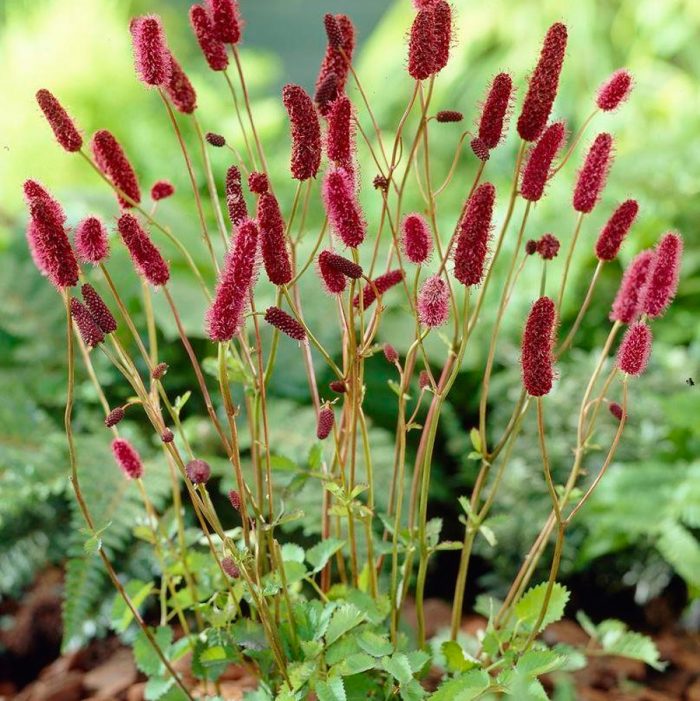
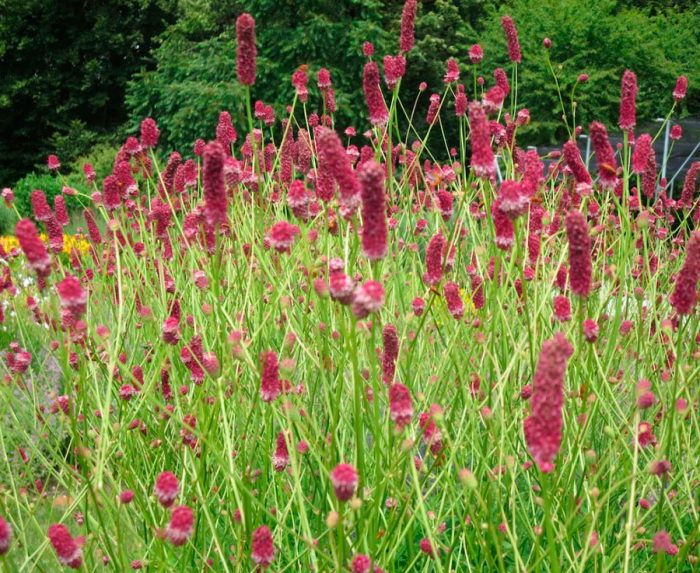
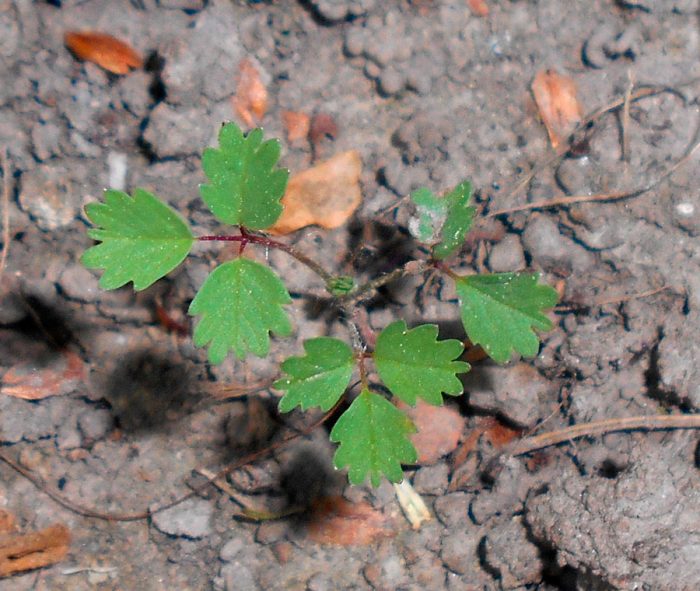
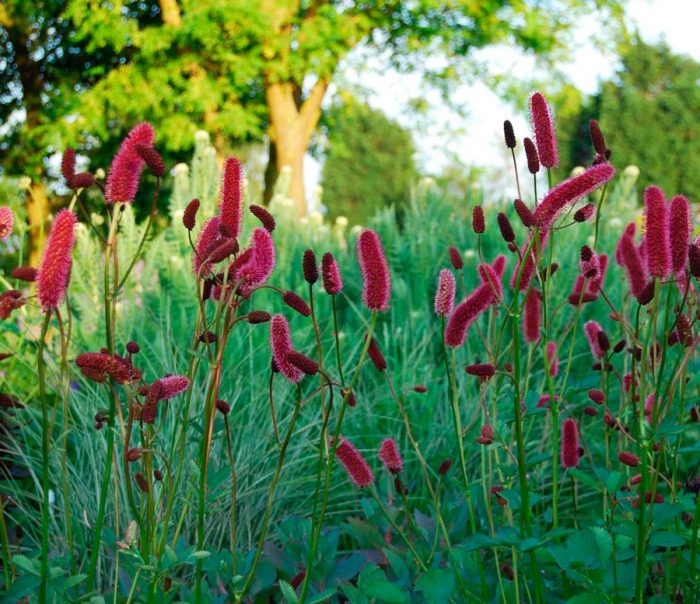
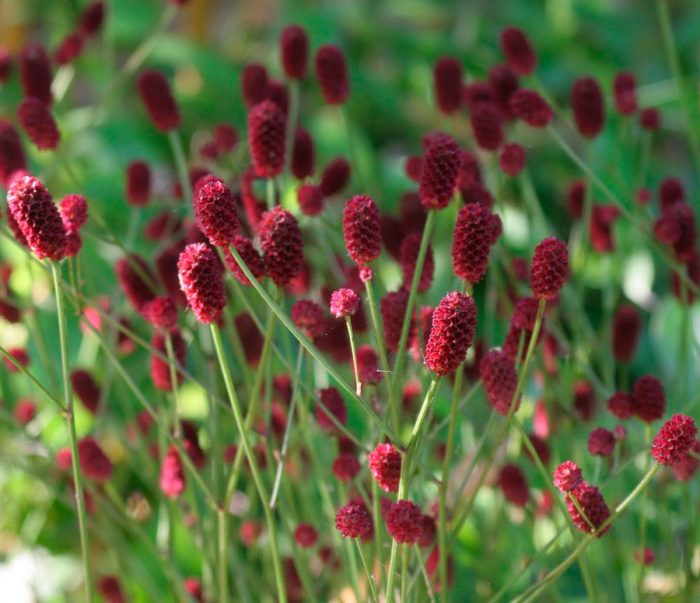
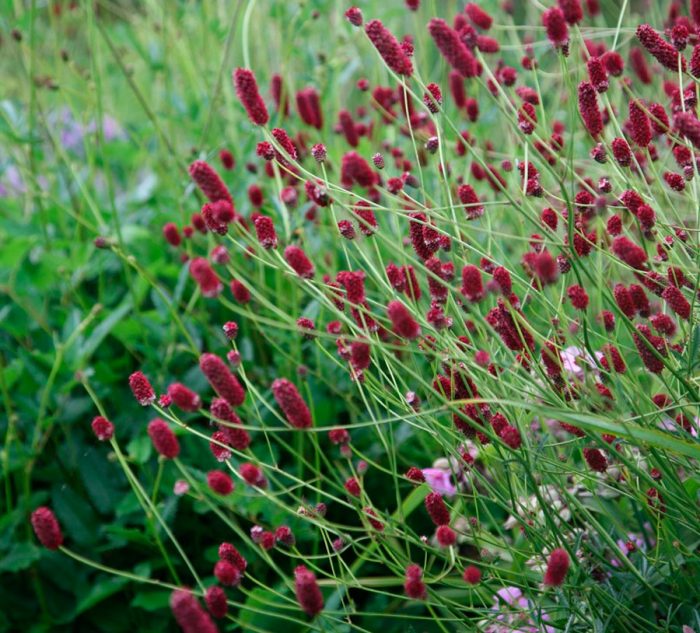
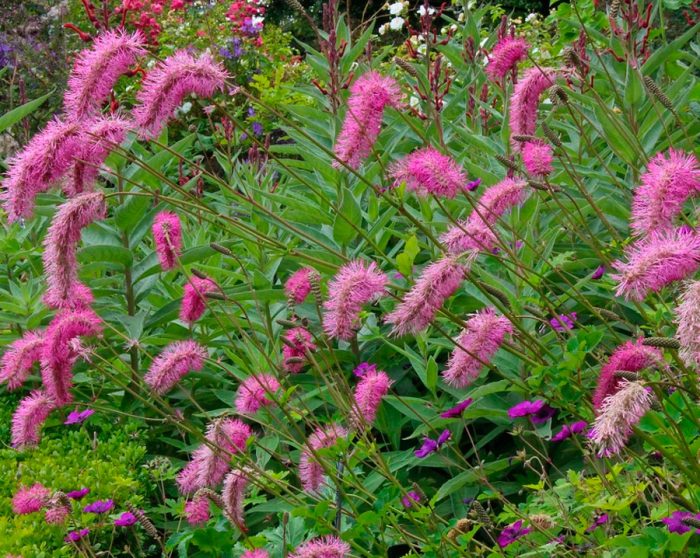
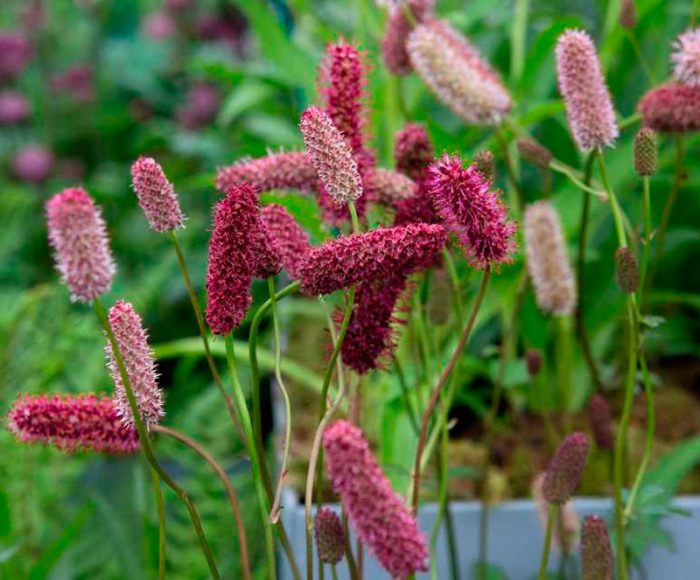
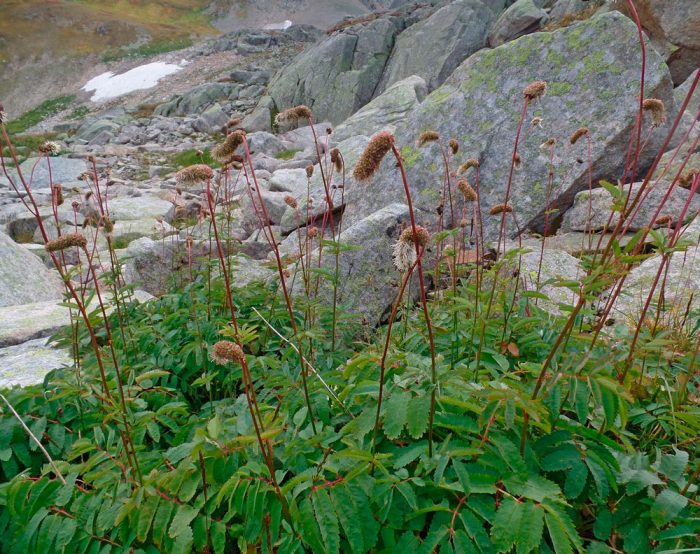
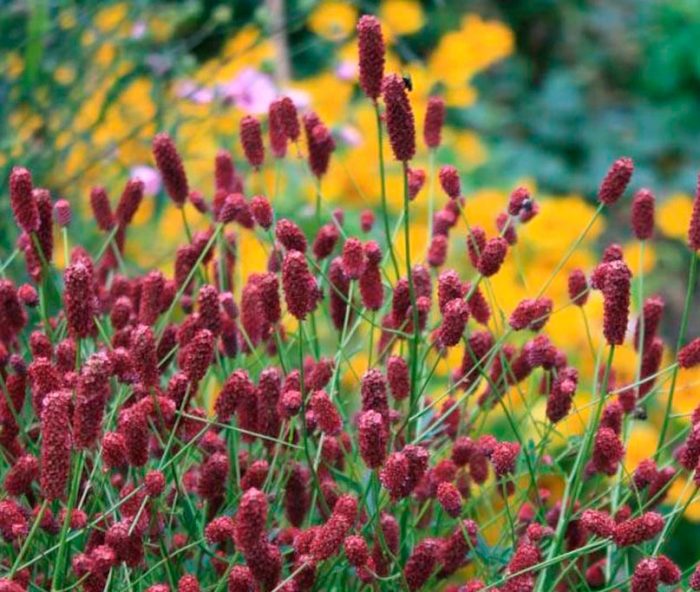
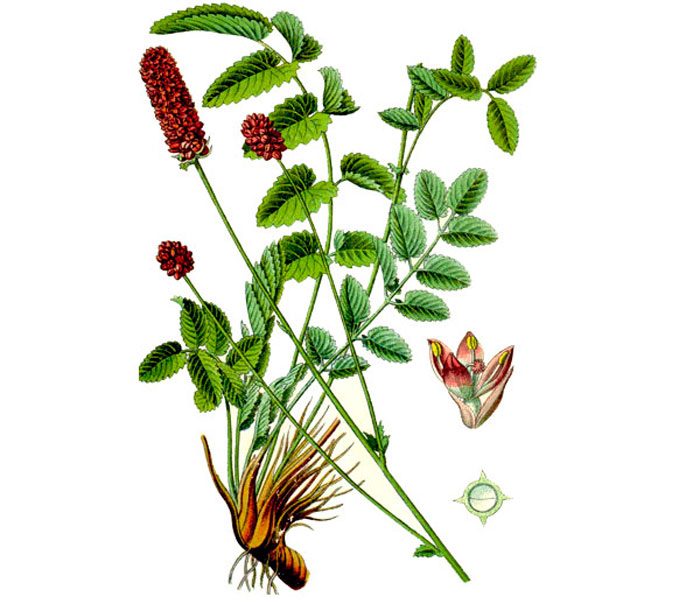






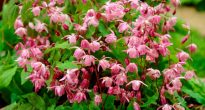

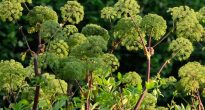
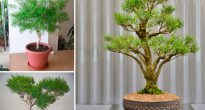

I saw this plant so many times, but I did not know the name) Thanks for an interesting article.
I saw it in a Soviet biology textbook. This is the first time I see such a plant, probably due to the fact that I live in the wrong area :) Thanks for the information!